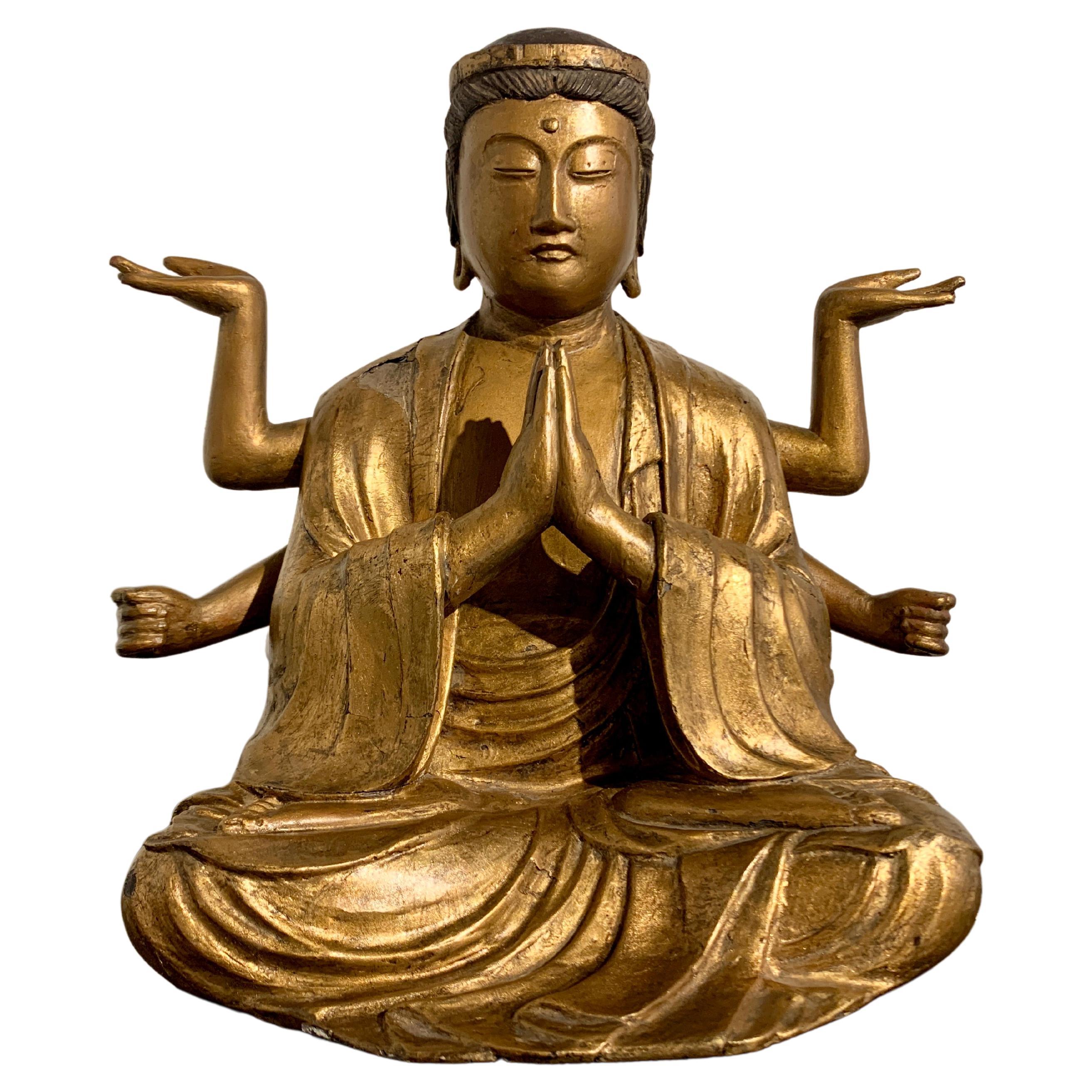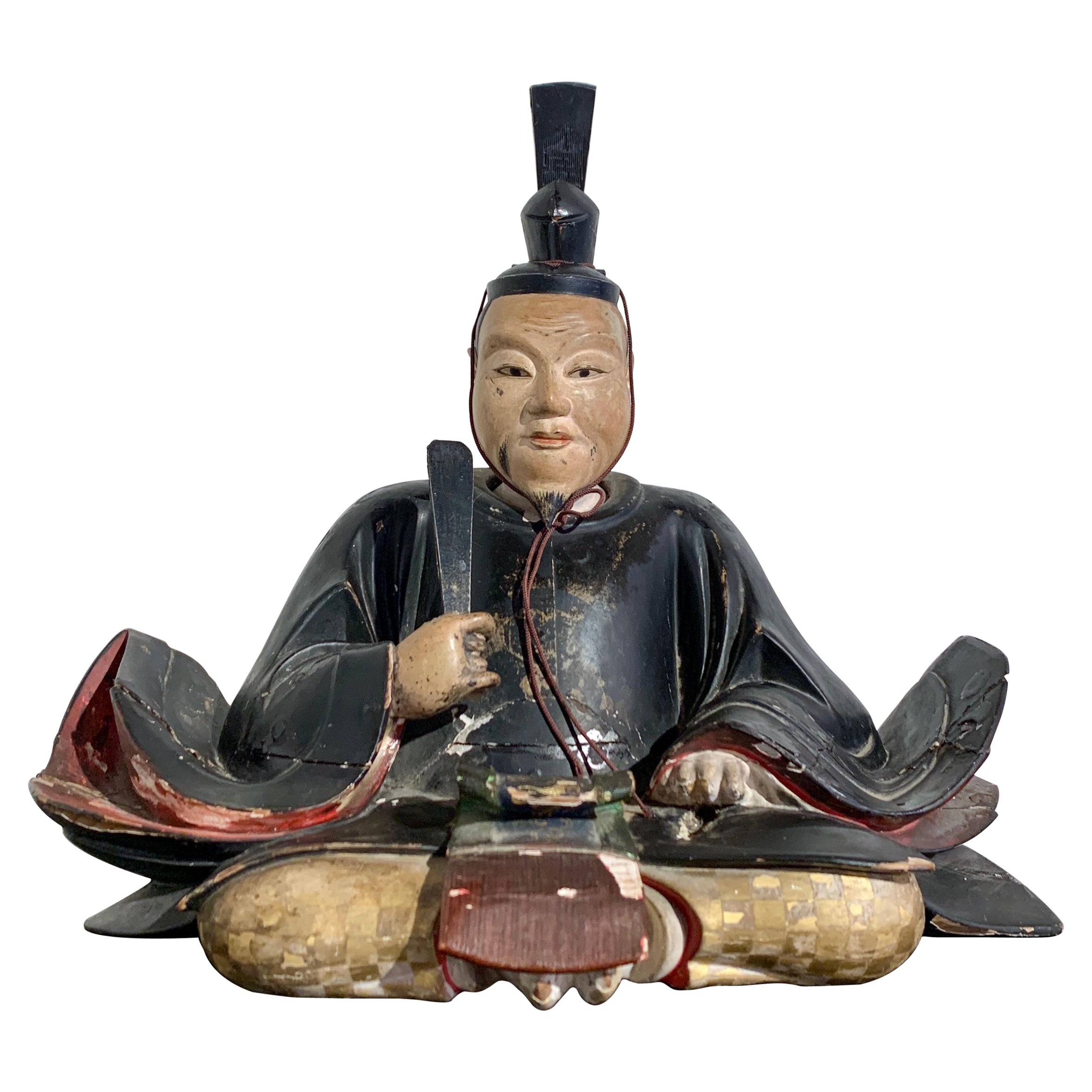Items Similar to Japanese Lacquer, Bone and "Root" Wood Screen Meiji Period
Want more images or videos?
Request additional images or videos from the seller
1 of 13
Japanese Lacquer, Bone and "Root" Wood Screen Meiji Period
About the Item
A Japanese lacquer, bone and "Root" wood screen
Meiji period, late 19th century
of rectangular form, inlaid and applied in relief with finely carved bone with large leafy peony sprays and warriors on a black lacquer ground, the wood frame elaborately carved and pierced, sealed
Measures: Height 63 in. 160 cm.) (5 feet 2 inches)
Width 54 in. (137.16 cm.) (4 feet 6 inches)
Depth 21 in. (53.34 cm.)
- Dimensions:Height: 63 in (160.02 cm)Width: 54 in (137.16 cm)Depth: 21 in (53.34 cm)
- Materials and Techniques:
- Period:
- Date of Manufacture:19th Century
- Condition:
- Seller Location:West Palm Beach, FL
- Reference Number:
About the Seller
5.0
Vetted Seller
These experienced sellers undergo a comprehensive evaluation by our team of in-house experts.
Established in 1989
1stDibs seller since 2018
92 sales on 1stDibs
Typical response time: 8 hours
- ShippingRetrieving quote...Ships From: West Palm Beach , FL
- Return PolicyA return for this item may be initiated within 3 days of delivery.
More From This SellerView All
- Rare Meiji Period Japanese Lacquer CabinetLocated in West Palm Beach, FLLarge, rare and important Meiji period, late 19th century, Japanese lacquer cabinet Meiji period (1868-1912) 19th century In three parts, desi...Category
Antique 19th Century Furniture
MaterialsWood
- Japanese Cloisonne Vase and Cover, Meiji PeriodLocated in West Palm Beach, FLA Japanese Cloisonne vase and cover, Meiji period finely decorated in silver and copper wire and a variety of coloured enamels with six panels, the body and cover with bands of lapp...Category
20th Century Ceramics
MaterialsCopper
- A Pair of Spinach-green Jade "Prunus and Deer" table screensLocated in West Palm Beach, FLA Pair of Spinach-green Jade "Prunus and Deer" table screens each worked on both sides with deer, prunus blossoms and birds, carved in mirror image, the stone of a rich variegated g...Category
20th Century Sculptures and Carvings
MaterialsJade
- Satsuma Earthenware Vase and Cover, Japanese, Meiji PeriodBy SatsumaLocated in West Palm Beach, FLA Satsuma Earthenware vase and cover, Japanese, Meiji period, (1868-1912) decorated in polychrome enamels and gilt over a clear, crackled glaze, delicately painted with samurai on ...Category
Antique 1890s Antiquities
MaterialsCeramic
- Kinkozan, Japanese Satsuma Vase, Meiji PeriodBy KinkozanLocated in West Palm Beach, FLKinkozan, Japanese Satsuma vase, Meiji Period (1868-1912) Of baluster form with an elongated neck decorated in polychrome enamels and gilt on a clear crackle glaze in an Art-Nouvea...Category
20th Century Ceramics
MaterialsCeramic
- Japanese Satsuma Earthenware Vase, Meiji PeriodLocated in West Palm Beach, FLJapanese Satsuma Earthenware Vase, Meiji Period, 1868-1912, of baluster form, the decorated in poly-chrome enamels and gilt on a clear crackle glaze with a Daimyo procession, the nec...Category
20th Century Ceramics
MaterialsCeramic
You May Also Like
- Japanese Gilt Wood Fukukenjaku Kannon, Meiji Period or Earlier, JapanLocated in Austin, TXAn attractive and esoteric Japanese carved and gilt wood figure of Fukukenjaku Kannon, Amoghapasa, Meiji period or earlier, Japan. Fukukenjaku Kannon is portrayed in an usual six...Category
Antique Early 1900s Japanese Meiji Sculptures and Carvings
MaterialsCypress
- Japanese Lacquered and Gilt Wood Buddhism Statue from Edo PeriodLocated in Atlanta, GAAn exceptional and wood statue of Buddhism Guardian Seitaka Doji from Japan circa Edo period (1603-1868), likely the earlier part of 17th century. One of two chief attendants of Fudo...Category
Antique 17th Century Japanese Japonisme Sculptures and Carvings
MaterialsMetal
- Japanese Meiji Period Carved Wood Okimono Man with RabbitsLocated in Newark, EnglandThe charming figure, carved from a single piece of wood is exceptionally carved showing the male figure with humorous expression holding two Rabbits one by the ears and the second under his arm. A third Rabbit stands at the feet of the male looking up, each rabbit with a different expression. The male figure is wearing traditional Japanese attire with his hair tied back stood upon a naturalistic base. The figure dates to the Meiji Period (1868-1912) circa 1900. Notes The Rabbit is one of the 12 animals to feature in the Japanese Zodiac signs which follows the Chinese astrological system along with the Rat, Ox, Tiger, Rabbit, Dragon, Snake, Horse, Goat, Monkey, Rooster, Dog, Pig. Such division is connected with the Jupiter cycle around the Sun, which lasts about 12 years. As 2023 is the year of the Rabbit...Category
Antique Early 1900s Japanese Meiji Sculptures and Carvings
MaterialsWood
- Japanese Carved and Lacquered Wood Shogun, Edo Period, 19th Century, JapanLocated in Austin, TXAn unusual Japanese carved wood, lacquer, and gilt decorated portrait sculpture of a shogun, Edo Period, early 19th century, Japan. The unidentified shogun (possibly Tokugawa Iey...Category
Antique Mid-19th Century Japanese Edo Sculptures and Carvings
MaterialsWood, Lacquer
- Japanese Bronze Torii Gate Sculpture Meiji PeriodLocated in Newark, EnglandBeautifully sculpted Japanese Meiji period Torii gate sculpture. The sculpture made from solid bronze with a beautiful patination throughout dating to the Meiji period 1868-1912 circa 1890. The gate of traditional form representing the Matsuo Shrine in Kyoto. The characters read ???? translated directly to Matsuo Shrine. Notes The Torii gate sculpture was crafted after the famous Torii gate which is found in the Arashiyama district in Kyoto. It houses Matsuno’o Taisha (Matsunoo Taisha ????) one of the oldest shinto shrines in Kyoto dating to 701, approximately 100 years before the city of Kyoto. It boarders the mountains and has a distinct main hall dating to 1397 which is also one of the oldest buildings in the city of Tokyo. The shrine’s spring is famous for its restorative properties and sake and miso producer’s patron the shrine with their particular industries relying on the pure water to survive. The distinct giant Torri gate stands at 14 meters tall alluding to its significance in the city. Three beautiful gardens can...Category
Antique Late 19th Century Japanese Meiji Sculptures and Carvings
MaterialsBronze
- Two Rare Japanese Izumo Clay Dolls of Emperor and Tenjin, Meiji PeriodLocated in Ottawa, OntarioTwo rare Japanese Izumo clay dolls of Emperor and Tenjin, Nara Prefecture, Meiji period. Material and simple execution impart a flavor of antiquity and great decorative power. Empero...Category
Antique Late 19th Century Japanese Meiji Sculptures and Carvings
MaterialsClay
Recently Viewed
View AllMore Ways To Browse
The Office Screen Used
Carved Bone
Antique Carved Bone
Carved Root
Japanese Room Screen
Black Decorative Screens
Black Lacquered Inlaid Furniture
Wood Warrior
Root Wood Carved
Sculptures 5 Feet
Lacquer Seal
Finely Carved Wood Sculpture
Meiji Framed
Bone Japanese
Japanese Wood Relief
Wood Root Sculptures
Meiji Wood Sculpture
Antique Japanese Lacquer Screens





